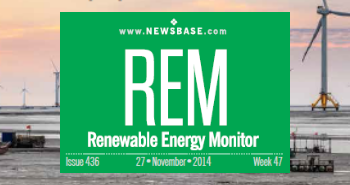China’s Energy Singularity produces first net energy positive fusion reaction

The Shanghai-based commercial fusion energy company Energy Singularity announced on June 19 that it has successfully built the world’s first fusion reactor that puts out more energy than it takes in to run it, The Global Times reported.
Energy Singularity’s technology is based on a high-temperature superconducting tokamak device, Honghuang 70 (HH70).
A tokamak is a machine that confines a plasma using magnetic fields in a doughnut shape that scientists call a torus. Fusion energy scientists believe that tokamaks are the leading plasma confinement concept for future fusion power plants.
And Energy Singularity’s has successfully achieved first plasma with the HH70 that allows for a fusion reaction in a similar reaction that fuels the sun. It has performed a fusion reaction that produced slightly more energy than was needed to cause the reaction, making the HH70 device a potential source of almost unlimited clean energy.
This announcement marks a significant leap for China in the development and application of fusion technology for clean energy as it overtakes the US, which is also close to achieving nuclear fusion.
The technological breakthrough of the HH70, that has been dubbed an “artificial sun”, is to engineer high-temperature superconducting tokamak technology. “This achievement signifies China’s first-mover advantage in high-temperature superconducting magnetic confinement fusion,” the company stated.
Yang Zhao, chief executive officer of Energy Singularity, highlighted the independent intellectual property rights of HH70, noting that 96% of the technology had been developed in China.
“The design work of the device began in March 2022, and the overall installation was completed by the end of February this year, setting the fastest record for the research and construction of superconducting tokamak devices worldwide,” Yang said, as quoted by The Global Times.
The successful discharge of HH70 establishes Energy Singularity as the first and only team globally to build and operate an entirely high-temperature superconducting tokamak.
Looking ahead, Yang said the company is working on next generation high magnetic field high-temperature superconducting tokamak, HH170 that it hopes to deliver by 2027.
The goal is to achieve an equivalent energy gain (Q) from fusing deuterium with hydrogen to form tritium greater than 10. For fusion devices, the Q value, which reflects the energy efficiency of the fusion reactor, is a crucial indicator. Currently, the maximum Q value ever recorded is 1.53.
“Using high-temperature superconducting materials can reduce the volume of a device to about 2% of traditional low-temperature superconducting devices, and the construction period will be shortened from 30 years to 3-4 years if a tokamak device with Q>10 is built,” Yang emphasised.
Amid growing concerns over the global energy crisis, many experts view confinement nuclear fusion as the ultimate solution, providing a nearly infinite, clean, and cheap source of energy. High-temperature superconducting tokamaks, combining robust physics with engineering innovation, are expected to significantly improve cost-effectiveness and accelerate the commercialisation of fusion energy.
In 2018, US-based Commonwealth Fusion Systems (CFS) proposed the first small high-temperature superconducting tokamak device, SPARC, with Q≥10. Construction of SPARC began in 2022 with completion expected by 2025. Ye Yuming, co-founder and Chief Operating Officer of Energy Singularity, noted that HH170 will surpass SPARC in magnetic field strength and will be smaller and more cost-effective. “Once completed, HH170 will be the world's smallest and lowest-cost tokamak device capable of achieving a 10-fold energy gain,” Ye said.
To support HH170’s development, Energy Point is also creating high-temperature superconducting D-shaped magnets, aiming for a magnetic field strength of 25 Tesla. Manufacturing and testing are planned for completion by the end of this year. The already completed HH70 has a magnetic field strength of 2.5 Tesla. Engineering design for HH170 is expected to commence early next year, with plans for the HH380 device, intended for a demonstration fusion power plant, to start after 2030.
Established in Shanghai in June 2021, Energy Singularity focuses on researching commercially viable high-temperature superconducting tokamak devices and their operational control software systems. Its shareholders include miHoYo, developer of the popular game Genshin Impact, and electric carmaker NIO.



Follow us online